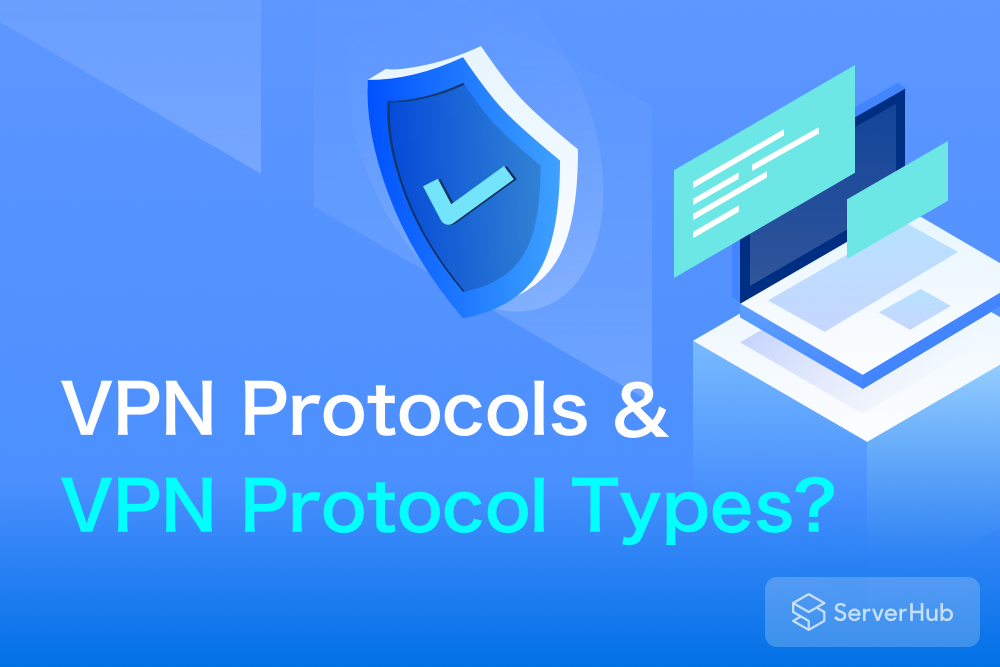
A Virtual Private Network (VPN) is a network that allows users to securely connect to a private network over the Internet. VPN creates an encrypted connection that is called a VPN tunnel. It is a secure tunnel that all traffic and communication pass through. This helps ensure that sensitive data is safely transmitted between servers.
What are VPN Protocols?
For safety and security, which are the main purposes of a VPN, there are several types of protocols that come with it, assuring that the Virtual Private Network serves it function.
So what exactly are those protocols? VPN protocols are merely sets of instructions that govern the connection between two parties on a public network, depending, of course, on the network layer and the type of protocol used.
In all cases, a VPN protocol changes the status of the connection from public to private by creating an encryption on it and passing it through a VPN Tunnel, and thus comes the concept of Tunneling.
The Purpose of VPN Protocols
The purpose of a VPN protocol is to transfer data from your device to the VPN server in the most secure manner possible without disrupting your internet connection stability, your speed, etc..
However, each protocol goes about doing that differently and that’s why we have different protocol types. Some VPN Protocols are mainly focused on maintaining speed and stability, others are more focused on using very strong encryptions, and blocking the connection from even the tiniest chance of harm on the expense of maybe lowering the user’s download speed.
All VPN Protocols, however, are a mixture of both. A shield to protect from harm and a sword to ensure that the connection remains steady and stable.
Types of VPN Protocols
There are many types of VPN protocols. In this article, we will discuss 6 of the most commonly used ones.
Internet Protocol Security (IPSec)
Like the name suggests, IPSec is a protocol that secures all internet communication across an IP network and protects the IP network of end-to-end users.
Through providing keys to lock/unlock the encryption on the network and developing a strict authentication process to ensure that the communication between the networks is held by each approved individual connection, IPSec serves as a very trustworthy security protocol.
The data moving between the two connections is divided into packets and those packets pass through encryption. That’s why IPSec runs in two modes.
Transport Mode: Encrypts the data inside the data packet.
Tunnel Mode: Encrypts and hides the whole data packet.
IPSec is also commonly used as an extra-protective measure along with other VPN Protocols.
Layer 2 Tunneling Protocol (L2TP)
LT2P’s main function isn’t to create the encryption or the authentication process but it’s to develop the main channel of communication between two networks.
If either of the parties in the connection requests passage, L2TP creates a secure and sturdy tunnel for the data packets to pass through. As soon as the tunnel is built, data passage between the two connections will be steady and secure.
Point-To-Point Tunneling Protocol (PPTP)
PPTP is the most commonly used VPN Protocol. Since it is a product of Microsoft and has been widely used since the release of Windows (even though it is also commonly used on Mac and Linux), it is considered to be one of the most secure VPN protocols.
PPTP does everything. First it creates a tunnel between the two networks and then it authenticates and encrypts the data passing through that tunnel, making a secure and speedy VPN connection.
Secure Socket Layer & Transport Layer Security (SSL & TLS)
SSL & TLS are security measures mostly used for HTTP & HTTPS browsing. They generate a VPN connection where a Client and User relationship is built between the web browser and the application server, limiting the user to parts of the application rather than the whole network.
The way this works is.. encryption/decryption keys gets mutually generated each time an action is taken by either side of the connection.
Online stores and Chat applications use SSL & TLS Protocol in order to secure the data that passes between both the application server and the browser.
OpenVPN
OpenVPN is an advanced open source VPN Protocol, therefore, it allows customization to Virtual Networks. It is most commonly used for creating safe and secure Site-to-Site connections but it is often used for remote connections as well.
The functionality of OpenVPN is dependent on cryptographic techniques that are based on the usage of SSL & TLS Protocol.
Secure Shell (SSH)
SSH creates a Client Machine/Server relationship. This protocol creates a tunnel through which the data travels after it is encrypted.
The Secure Shell operates on a Client/Server Machine to ensure that communication between both the SSH Client and the SSH Server are safe and secure.
Conclusion
Each VPN Protocol Type serves specific functions, and though they are sometimes complimentary and could complete each other, it is best to read what they do carefully before adopting a specific protocol to use.
There are many VPN services that offer different protocols and now that you know what those protocols are, you can make sure to check what your VPN software uses in order to find out if it’s the best for you.
For more articles related to VPN and Security, make sure to check out ServerHub’s Knowledgebase.
I’ve been absent for a while, but now I remember why I used to love this website. Thank you, I抣l try and check back more often. How frequently you update your web site?
Wow! Thank you! I permanently wanted to write on my website something like that. Can I include a portion of your post to my blog?